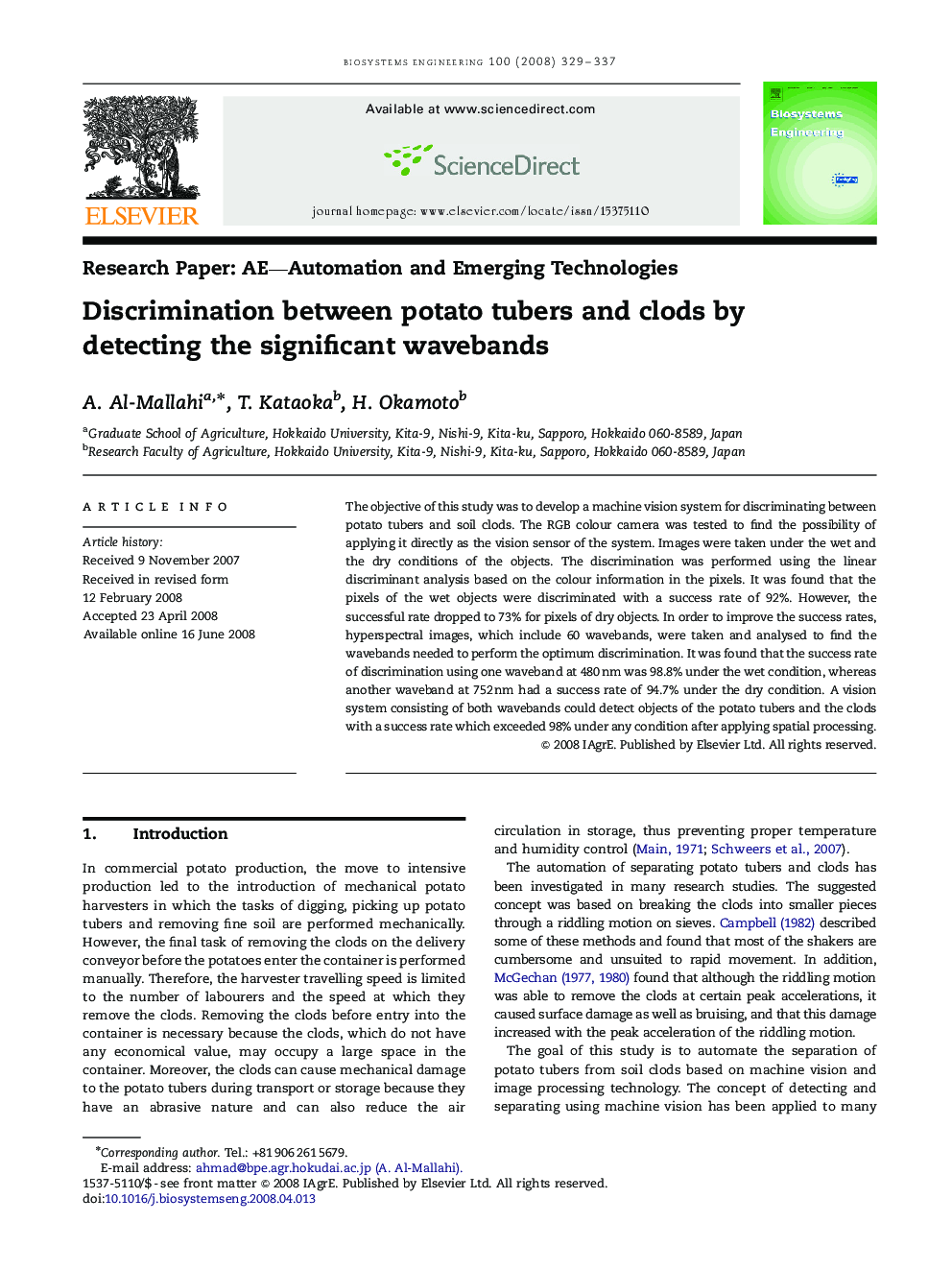| Article ID | Journal | Published Year | Pages | File Type |
|---|---|---|---|---|
| 1712282 | Biosystems Engineering | 2008 | 9 Pages |
The objective of this study was to develop a machine vision system for discriminating between potato tubers and soil clods. The RGB colour camera was tested to find the possibility of applying it directly as the vision sensor of the system. Images were taken under the wet and the dry conditions of the objects. The discrimination was performed using the linear discriminant analysis based on the colour information in the pixels. It was found that the pixels of the wet objects were discriminated with a success rate of 92%. However, the successful rate dropped to 73% for pixels of dry objects. In order to improve the success rates, hyperspectral images, which include 60 wavebands, were taken and analysed to find the wavebands needed to perform the optimum discrimination. It was found that the success rate of discrimination using one waveband at 480 nm was 98.8% under the wet condition, whereas another waveband at 752 nm had a success rate of 94.7% under the dry condition. A vision system consisting of both wavebands could detect objects of the potato tubers and the clods with a success rate which exceeded 98% under any condition after applying spatial processing.
